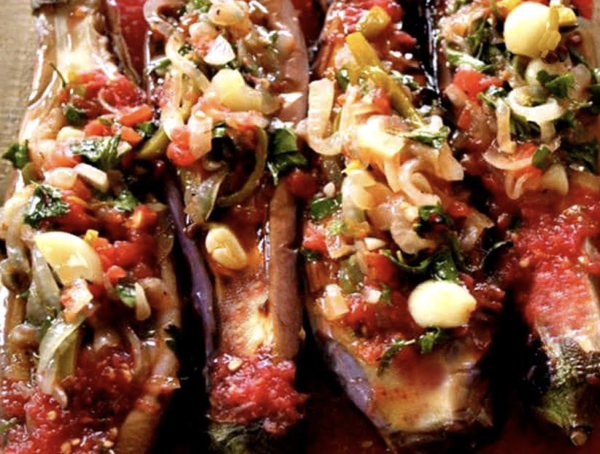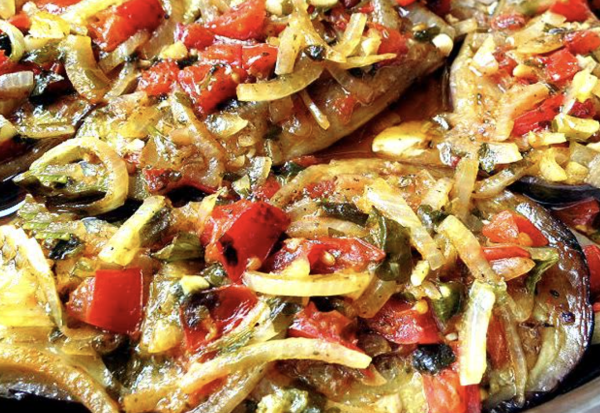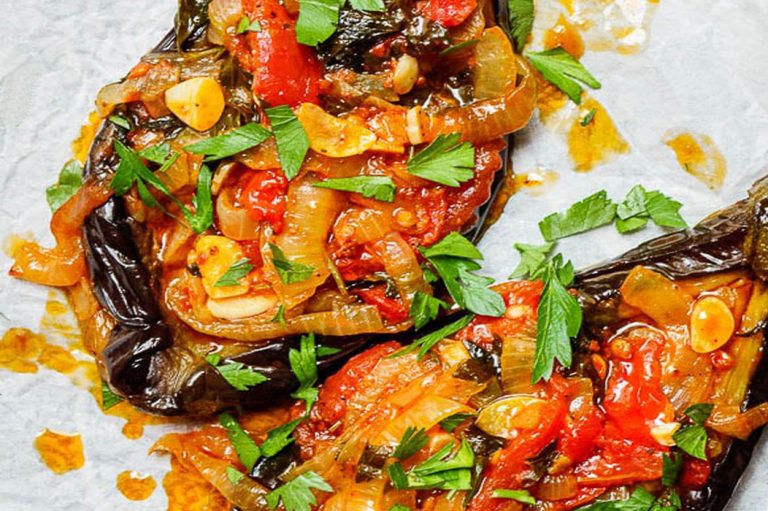Published with permission from LuxuryWeb Magazine
Imam Bayildi, a dish steeped in the rich culinary traditions of the Ottoman Empire, captivates the palate with its harmonious blend of flavors and ingredients. Crafted with the utmost care, this dish is a celebration of Italian eggplants in Turkey and long, slender Asian eggplants in Greece, bathed in a generous amount of olive oil. It holds a revered place in Turkish and Greek cuisines, with variations found in Lebanese and Egyptian culinary traditions as well.
The intriguing name “Imam Bayildi” translates to “the priest fainted,” a nod to a charming legend. The story goes that a priest was overcome by the sheer amount of precious olive oil his wife used in the dish’s preparation. Another interpretation suggests the priest was simply captivated by the dish’s exquisite taste. This narrative adds a layer of mystique to the dish, enhancing its allure.

Teeming with flavor
In the culinary tapestry of the Eastern Mediterranean, Imam Bayildi is a standout dish. Eggplants are gently poached in olive oil and a touch of water, then stuffed with a vibrant mix of cubed tomatoes, slivers of red pepper, onions, and garlic. This delightful concoction is served chilled or at room temperature, often accompanied by a fresh slice of lemon. It’s a dish that embodies the essence of summer, melting effortlessly in your mouth and leaving a lasting impression.
Reflecting on my childhood, I recall the meticulous preparations my mother made for Imam Bayildi. Despite having a modern electric stove at home, she preferred the even, consistent heat of the local bakery’s brick oven for cooking the dish to perfection. This tradition underscores the dish’s cultural and familial significance.
Success
You are now signed up for our newsletter
Success
Check your email to complete sign up
My personal rendition of Imam Bayildi omits capsicum and focuses on the core ingredients that make this dish so beloved. The recipe caters to 4 to 6 servings, and includes:
Ingredients:
- 3 medium-sized onions, either white or red
- 2 large or 3 medium tomatoes, finely chopped
- 4-5 Asian eggplants or medium-sized Italian eggplants for the Turkish variant
- 7 – 9 cloves of garlic
- The juice of half a lemon
- 6-8 tablespoons of olive oil, adjusted based on the eggplants’ size
- Sea salt and freshly ground black Malabar pepper to taste
- A teaspoon of sugar
- Additional olive oil for frying the eggplants
- Chopped flat-leaf parsley for garnish
Preparation:
The preparation process begins with making a longitudinal slit in each eggplant, careful not to pierce through the opposite side. This is followed by a salting process to draw out moisture and any bitterness. After patting the eggplants dry, they’re shallow-fried in olive oil until softened and beautifully colored, then set aside to cool.
For those who enjoy a smoky flavor, grilling the eggplants before frying is an optional step that adds depth to the dish. The filling, a mixture of onions, garlic, olive oil, tomatoes, and parsley, is then prepared and lovingly stuffed into the eggplants. These are cooked with a blend of olive oil, water, lemon juice, and sugar until tender.

Imam Bayildi is best enjoyed during the peak months of July, August, and September, though its comforting flavors can be savored year-round if fresh eggplants are available. When selecting eggplants, look for those with smooth, shiny skins, free of blemishes, to ensure the best taste and texture.
This dish, with its fewer seeds and tender flesh — particularly when made with Asian eggplants — offers a less bitter, sweeter experience than its Italian counterpart. Imam Bayildi not only showcases the culinary heritage of the Eastern Mediterranean but also serves as a testament to the timeless appeal of simple, yet profound flavors brought together with care and tradition.
Visit LuxuryWeb Magazine to see the original article and more.















